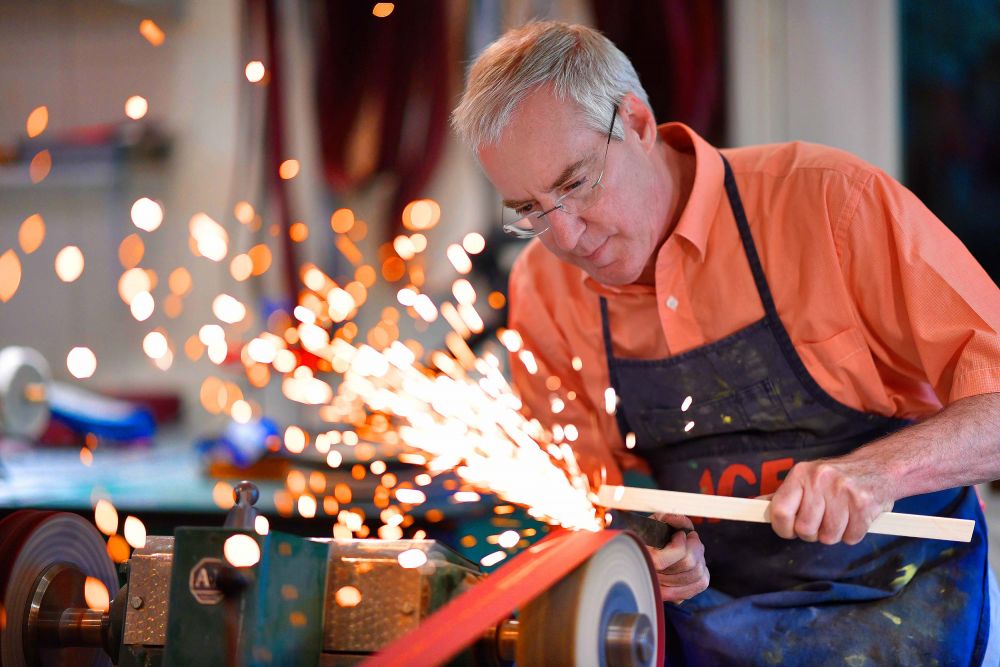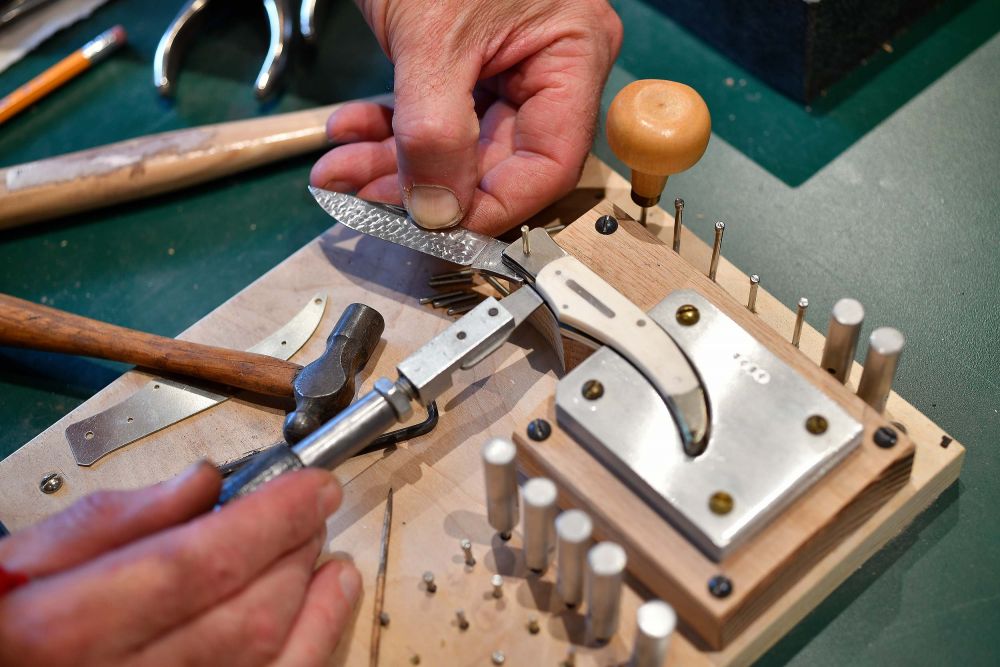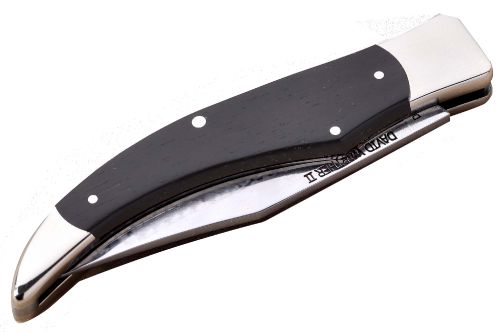Warther Pocket Knives Coming in 2019
Making plans of arriving in mid to late 2019
Warther pocketknives have been made in Dover, Ohio since 1905 by 3 generations in the Warther family.
Ernest Mooney Warther (1885-1973) originated his pocket knife style in 1905 and solidified this unique design by 1910. He continued making these knives into the early 1960's.
Mooney's son Dave (1926-2011) started making pocket knives when he was a teenager in the late 30's and continued making them into the 1990's.
Dave's son Dale (1952-2010) crafted pocket knives beginning in the 1970's. With the death of Dale in 2010 the pocket knife was no longer available.
Today, David Warther II ( Dave's son and Dale's brother) is working to bring the pocket knife back by mid 2019. The knives will be made by David in his Dover, Ohio shop that is a separate shop from the kitchen knife factory.
The new Warther pocket knife will be sold at David Warther Carvings and Gift Shop in Sugarcreek, Ohio and on this website. For more information phone to 330-852-6096.
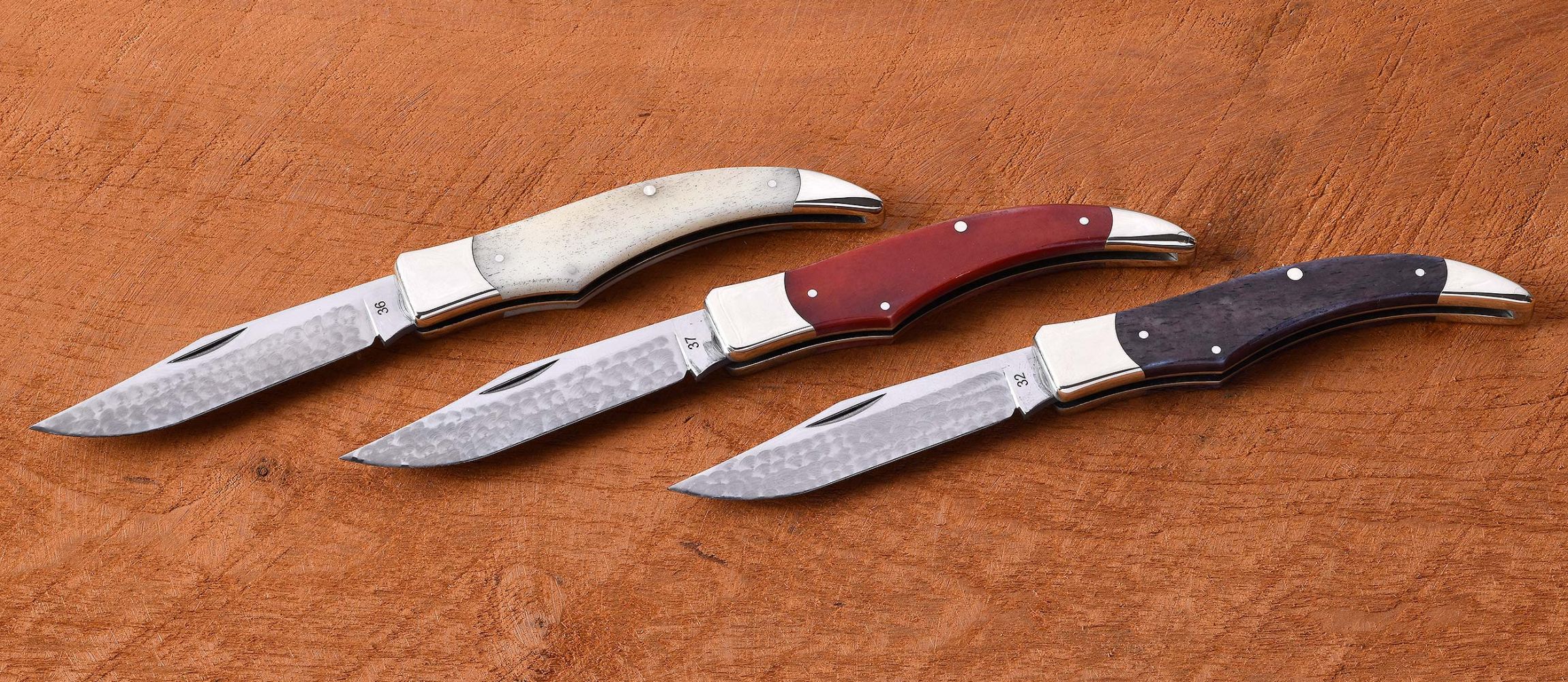
Model 1910
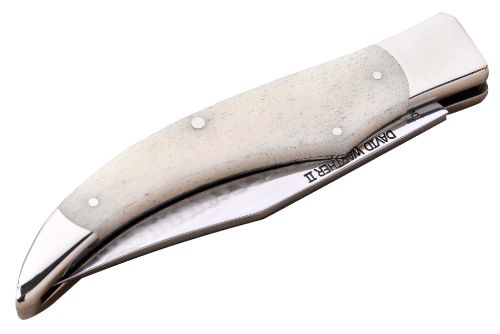
Model 1910 Natural White Bone
$ 700.00 SOLD OUT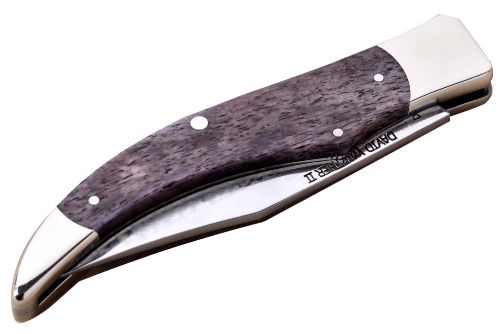
Model 1910 Tyrian-Phoenician Purple Bone
$ 700.00 SOLD OUT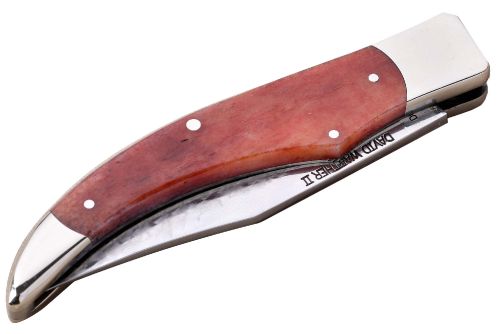
Model 1910 Red Ochre Bone
$ 700.00 SOLD OUTDavid Warther Knives Model 1910
In 1905, at age 20, Ernest Warther designed and made his first pocketknife. By 1910 he had refined and solidified the unique Warther pocketknife design and was utilizing North American cattle bone as the handle material.
Today the Model 1910 comes in a variety of different colored bone handles crafted from North American cattle bone. Bone has its own look and feel and is pleasant to the touch.
The bolsters and liners are of Nickel Silver. This has been the traditional bolster material since these knives were first made over a century ago. Nickel Silver, also known as German Silver, is a very tactile material that holds a warmth, a specific feel and an alluring weight that speaks well to the holder.
Nickel Silver retains an old world medieval depth of character that lets you know it is not stainless steel. This look and feel is an earmark of the Warther pocketknife.
The box that holds all of our knives is in the shape of the earliest Egyptian ships to reflect my work in carving the history of the ship. The box for the Model 1910 is of maple - one of the two primary woods grandpa carved with in 1910.
Click on a photo to the left for more photos and detailed information.
The knife is 6.75" long unfolded. It is 3.75" long folded and has a 3 inch blade.
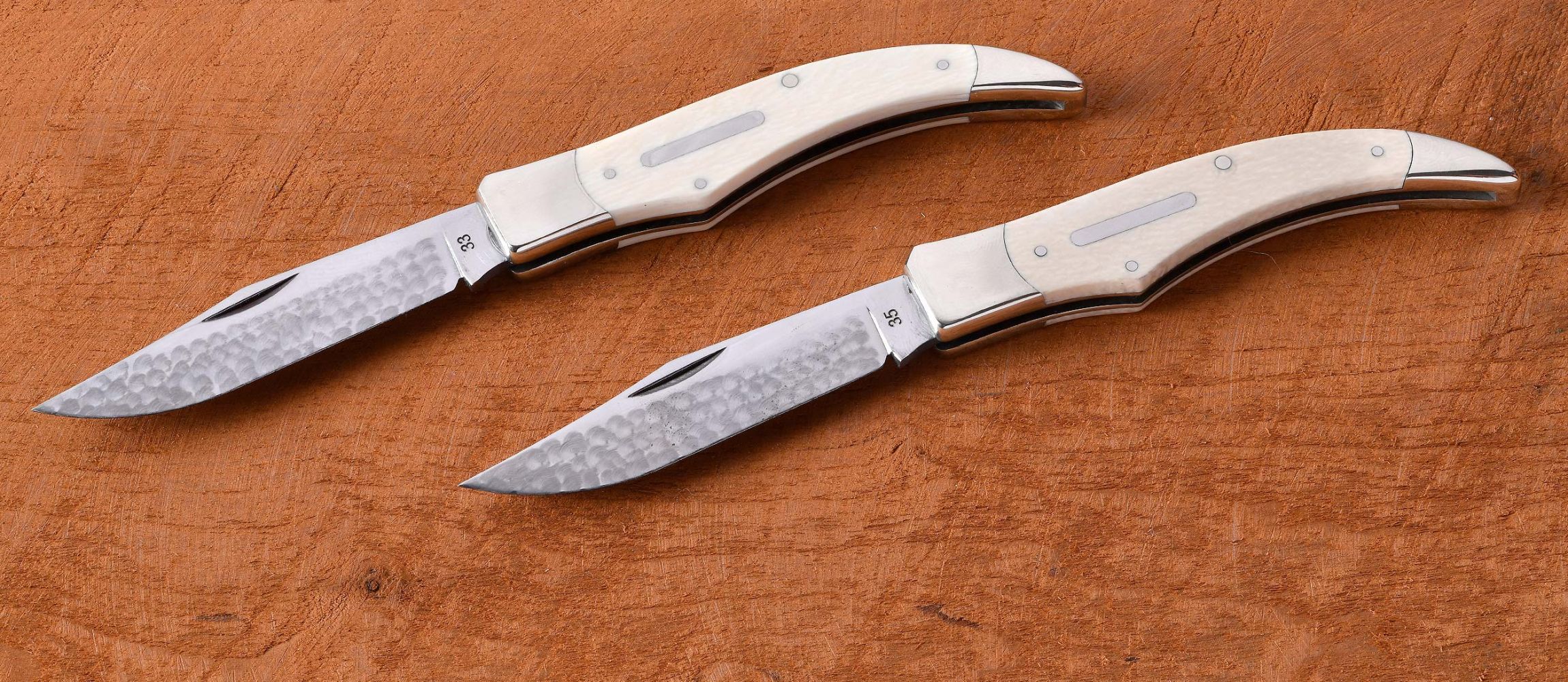
Model 1923
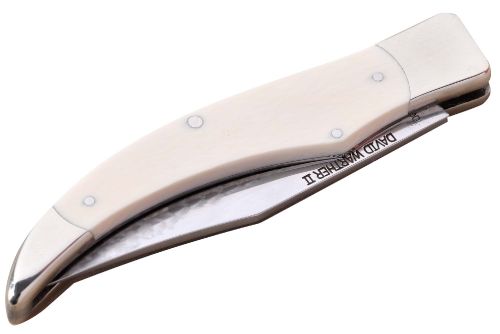
Model 1923 Pre-Ban Elephant Ivory
for Ohio Customers Only
$ 800.00 Order Online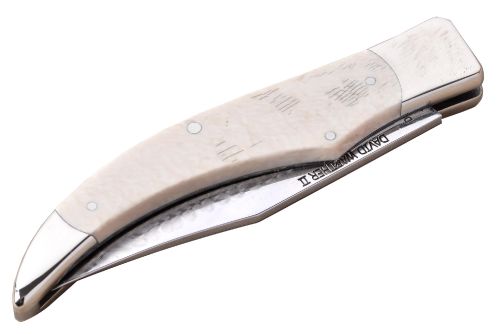
Model 1923 Ancient Mammoth Ivory
Legal to ship anywhere except to the US states of NY, NJ, CA, HI, NV or IL.
$ 800.00 Order OnlineDavid Warther Knives Model 1923
In 1923 Mooney began traveling his steam locomotive carvings with major railroad companies and later by exhibit trucks. This promotional work was lucrative and he was now making his pocket knives with ivory handles. In the roaring 20's Mooney's ivory handled pocket knives were well sought after.
Today, the Model 1923 is being made with pre-ban elephant ivory for Ohio customers and ancient ivory handles from ancient fossilized mammoth tusks. Pre-act elephant ivory, per federal regulation 50 CFR 17.40(e), cannot sell outside the state of Ohio. Fossil mammoth ivory can sell internationally and to all states except NY, NJ, CA, HI, IL and NV per state law in those states.
Click on a photo to the left for more photos and detailed information.
The bolsters and liners are of Nickel Silver. This has been the traditional bolster material since these knives were first made over a century ago. Nickel Silver, also known as German Silver, is a very tactile material that holds a warmth, a specific feel and an alluring weight that speaks well to the holder.
Nickel Silver retains an old world medieval depth of character that lets you know it is not stainless steel. This look and feel is an earmark of the Warther pocketknife.
The box that holds the knife is in the shape of the earliest Egyptian ships to reflect my work in carving the history of the ship. The box for the Model 1923 is of walnut - a wood grandpa carved exclusively from in 1923.
Click on a photo to the left for more photos and detailed information.
The knife is 6.75" long unfolded. It is 3.75" long folded and has a 3 inch blade.

Model 1938
David Warther Knives Model 1938
By 1930 the depression had impacted the life of Mooney as it had everyone in America. With customers no longer being able to afford ivory, a decade long series of ebony handled knives were made with many being made between 1938 and 1941.
The Model 1938 today is fitted with ebony wood handles.
The bolsters and liners are of Nickel Silver. This has been the traditional bolster material since these knives were first made over a century ago. Nickel Silver, also known as German Silver, is a very tactile material that holds a warmth, a specific feel and an alluring weight that speaks well to the holder.
Nickel Silver retains an old world medieval depth of character that lets you know it is not stainless steel. This look and feel is an earmark of the Warther pocketknife.
The box for the Model 1938 is of oak - a wood identified with strength. Grandpa was enduring the depression and dad was growing up in it - they had the strength every American had at the time to make it through those tough years.
Click on the photo to the left for more photos and detailed information.
The knife is 6.75" long unfolded. It is 3.75" long folded and has a 3 inch blade.
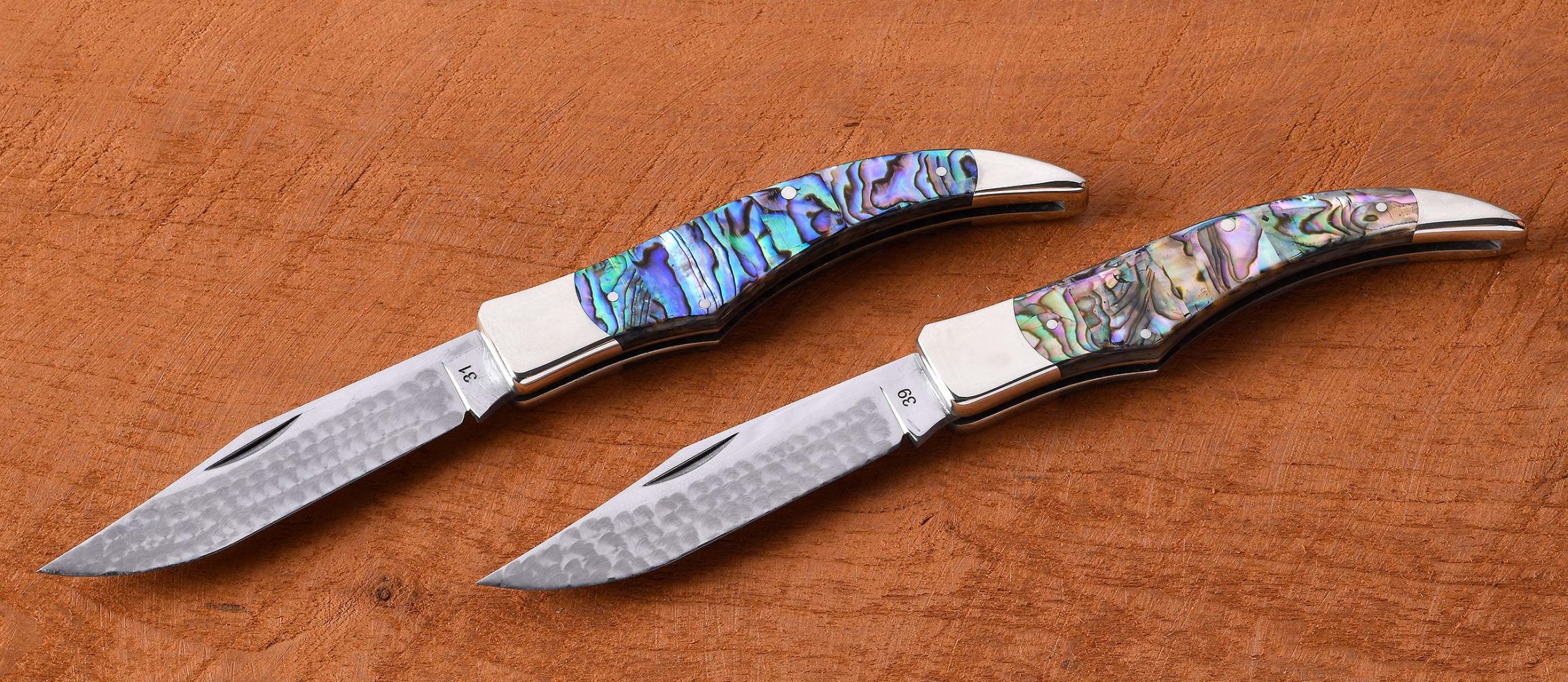
Model 1963
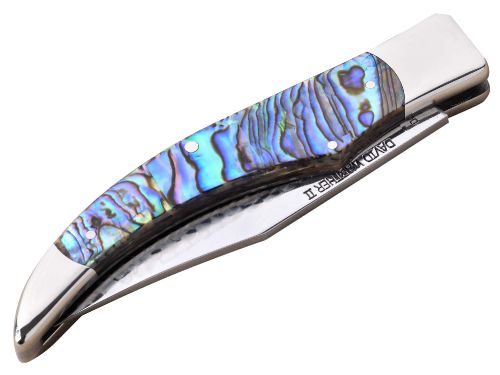
Model 1963 Paua Abalone Pearl
$ 900.00 Order Online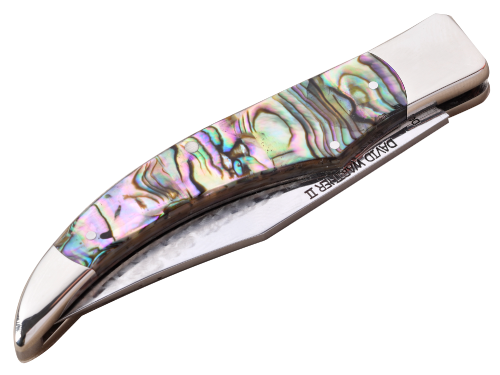
Model 1963 Select Green Abalone Pearl
$ 900.00 Order OnlineDavid Warther Knives Model 1963
In 1963, at age 78, Ernest made his last pocketknife. It was number 500 and it had handles made of abalone pearl.
It was in these later years that the Warther pocketknives, made by Mooney (1885-1973) and son Dave (1926-2011), were often made with abalone and mother of pearl handles. When Dave's oldest son Dale (1952-2010) began making pocketknives in the 1970's he continued with a focus of utilizing pearl handle material.
Today, the Model 1963 is fitted with a variety of different pearl handle material including abalone and Mother of Pearl.
The bolsters and liners are of Nickel Silver. This has been the traditional bolster material since these knives were first made over a century ago. Nickel Silver, also known as German Silver, is a very tactile material that holds a warmth, a specific feel and an alluring weight that speaks well to the holder.
Nickel Silver retains an old world medieval depth of character that lets you know it is not stainless steel. This look and feel is an earmark of the Warther pocketknife.
The box for the model 1963 is of wild cherry. When dad built the first museum in 1963, in Dover Ohio, the wood work in the building was done in wild cherry and I continued with that idea when I built the New Warther Museum in 2013 in Sugarcreek, Ohio.
Click on a photo to the left for more photos and detailed information.
The knife is 6.75" long unfolded. It is 3.75" long folded and has a 3 inch blade.
Warther Knives
Kitchen Knives Since 1902
Pocket Knives Since 1905
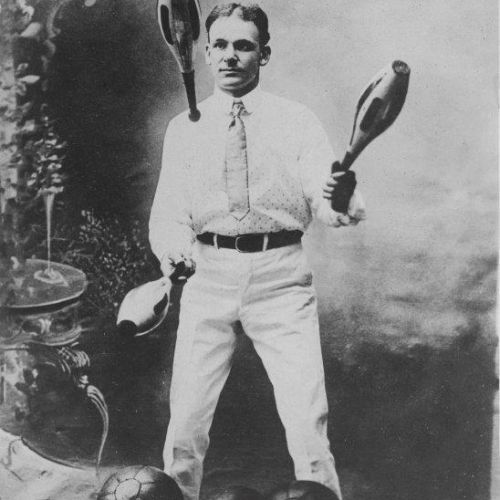
Great Uncle Otto 1903
The Warther family has had its share of characters over the generations. Great Uncle Otto was a gymnast and actor. He achieved his greatest fame in the early 1900's as a one man American Vaudeville performer who was able to keep 21 punching bags going actively at the same time.
To achieve this he stood inside a large cage where the bags were arranged so that he was able to hit various one's with his feet, knees, hips , elbows, hands and even his head.
To read more about the Warther family history click here.
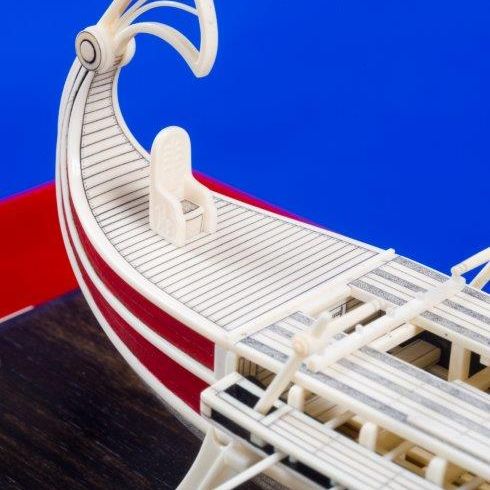
The New Warther Museum
David Warther Carvings in Sugarcreek, Ohio showcases the artwork of David Warther. Working on location in his workshop at the exhibit David has carved 87 miniature ships in antique ivory, ebony wood and abalone pearl.
The museum and gift shop are a key attraction for those folks visiting Ohio's Amish country. The Warther kitchen knives are sold in the gift shop.
To learn more about the New Warther Museum click here.
